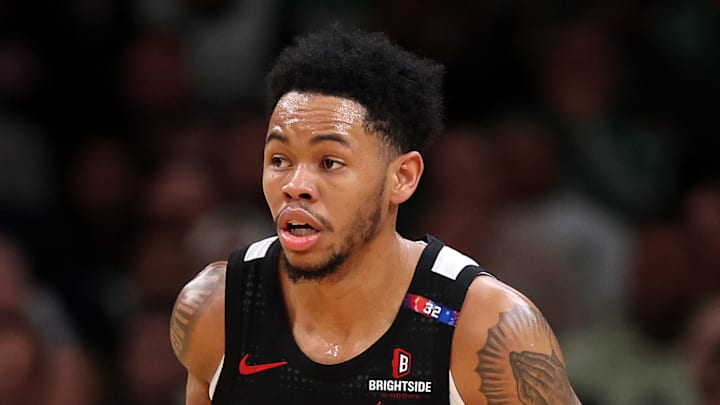Brad Stevens sent the Boston Celtics community into a frenzy late Monday night when the news broke of the Cs acquiring Anfernee Simons and two second-round picks from the Portland Trail Blazers in exchange for Jrue Holiday.
BREAKING: The Boston Celtics have traded Jrue Holiday to the Portland Trail Blazers for Anfernee Simons and two second-round picks, sources tell ESPN. pic.twitter.com/2ycXQicGkT
— Shams Charania (@ShamsCharania) June 24, 2025
Simons, 26, just completed his seventh season with Portland. He averaged 19.3 points, 4.8 assists, and 2.7 rebounds per game while shooting 42.6$ from the field, 36.3% from beyond the arc, and 90.2%(!) from the free-throw line.
Where does Simons fit with the Celtics?
The question now is, “What will Simons’ first season in Boston look like?”
He joins the Celtics after spending the better part of four campaigns as the first or second scoring option for the Blazers. It’ll be interesting to see how Simons fits into a roster like Boston’s. Will they start him? Bring him off the bench? Give him opportunities to create? Asking him to be a catch-and-shoot guy?
It feels like all of the above are realistic possibilities. If I had to guess, the Celtics will elect to start Payton Pritchard in Holiday’s place and have Simons assume a similar role to Pritchard’s last season off the bench.
Of course, even with Jayson Tatum sidelined with a ruptured Achilles, there isn’t an avenue for Simons to be as featured in the Celtics’ offense like he was with the Blazers. Players like Jaylen Brown, Derrick White, and even Pritchard will likely be prioritized over him within the game plan.
That might actually be a good thing for Simons. Some of his most efficient years came when he was in a smaller role, backing up Damian Lillard and CJ McCollum in Portland’s backcourt. In the 2020-21 season, he shot 42.6% from three on 4.4 attempts per game.
Since then, he’s had plenty of time to grow as a player and has seen an increase in responsibility with the Blazers. Unfortunately, he became a “good stats, bad team guy” in recent years. Granted, the roster hasn’t exactly been championship caliber either.
Offensively, Simons brings a lot to the table. His versatile skill set will help the Celtics remain competitive in the Eastern Conference, even without Tatum. Shooting is a staple of his game, for sure. He’s shot a career clip of 38.1% from long range, which makes him a compelling fit in Boston’s “Mazzulla Ball” offense. His rate was down a bit last season, but he was having to create a lot of his own shots off the dribble. With the Celtics, he’ll still have the opportunity to do so, but will likely get a fair helping of clean catch-and-shoot opportunities. Speaking of which, Simons is a solid finisher when he takes his man off the dribble. Last season, he converted on 63.6% of his attempts at the rim (zero to three feet).
The question marks with the former Blazers guard come on the defensive end. He, by all accounts and numbers, is not a good defender. He’s a bit undersized at 6’3” and doesn’t have the strength to irritate in the same way as other smaller guards, like Pritchard, can.
The defensive numbers aren't pretty for Simons.
— Bobby Manning (@RealBobManning) June 24, 2025
30th percentile in isolation
6th percentile guarding P&R ball handlers
54th percentile against spot up shooters
Opponents shot 50.6% FG against him last year, the worst mark of any Blazers regular contributor.
With that being said, the Trail Blazers were one of the NBA’s best defenses in the back half of the 2024-25 campaign. They accomplished this feat all while Simons was a rotation staple for them.
You can still have a good defense with Simons now imagine if he improves even a little pic.twitter.com/ngeYye9F1X
— NikNBA☘️ (@__Kingnik) June 24, 2025
So, it’s very possible that the Celtics can still have a respectable (at the very least) defense while super-charging their offense by adding the dynamic scorer.
